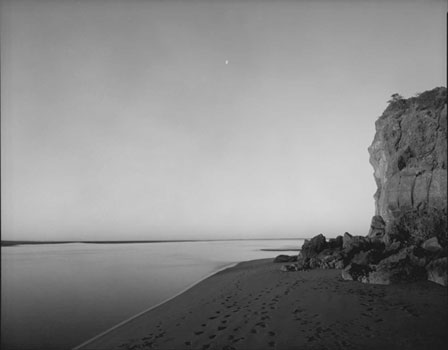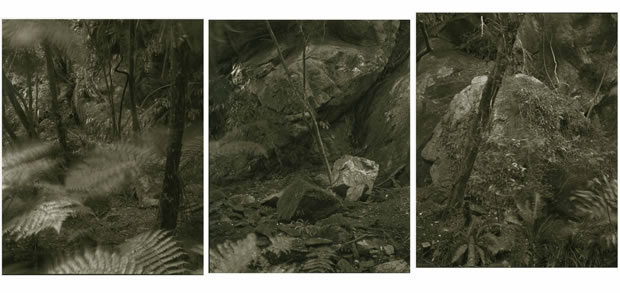|
April 12, 2009
Photoforum, which emerged out of the photographic new wave in New Zealand, is an Auckland-based:
non-profit society dedicated to the promotion of photography as a means of communication and expression.[It's] website showcases New Zealand photographic work and work of overseas photographers with some connection to New Zealand or PhotoForum.
There is a lot on material online to explore. It has online exhibitions, the most recent of which is Photoforum 33. More significantly there is a collection of portfolios of New Zealand established photographers and a portfolio of member's work.
It also functions as a resource base for New Zealand photography as it shows the work of 161 New Zealand photographers. There is members only magazine called Memento--and a blog that keeps members up to date with news about photography.
Given all this it is rather surprising that there is little work or reference to Mark Adams, who works in black and white with a 4x5 Linhof view camera in interesting ways:
 Mark Adams, Pioptiohai-Milford Sound, Atawhenua - Fiordland 1992, gelatin silver photograph, from Land of Memories: Scarred by People.
Mark Adams, Pioptiohai-Milford Sound, Atawhenua - Fiordland 1992, gelatin silver photograph, from Land of Memories: Scarred by People.
This body of work, which was done between 1988 and 1992, explored the South Island, tracing evidence of the Ngai Tahu people.
 Land of Memories: a contemporary view of places of historical significance in the South Island of New Zealand is a series of triptychs and diptychs looking at the layers of meaning inscribed into the landscape by New Zealand culture. Taken with long exposures, they appear painterly and ghostly, emphasizing the temporal nature of the images and the fluidity of meaning associated with these places
Land of Memories: a contemporary view of places of historical significance in the South Island of New Zealand is a series of triptychs and diptychs looking at the layers of meaning inscribed into the landscape by New Zealand culture. Taken with long exposures, they appear painterly and ghostly, emphasizing the temporal nature of the images and the fluidity of meaning associated with these places
Mark Adam's latter work is Cook's Sites: Revisiting History which is a collaboration between Mark Adams and Anthropologist Nicholas Thomas on the early cultural contacts between Maori and European their journey to the sites from Cook's journeys and to the archives and relics collected by museums in Germany.
The sites of contact between Cook's crews and the Maori people who occupied the land are in Dusky Sound and Queen Charlotte Sound. The photographs and text examine the traces of the past in these places, opening up ambiguities, and critically evaluating the colonizing of the landscape sites:
 Mark Adams, Cook's Sites Cascade Cove, Tauwhare, rock shelter and midden, Dusky Sound, 1995, Gold toned silver bromide fibre-based prints 3 prints: each 600 x 510 mm
Mark Adams, Cook's Sites Cascade Cove, Tauwhare, rock shelter and midden, Dusky Sound, 1995, Gold toned silver bromide fibre-based prints 3 prints: each 600 x 510 mm
Some of the views recreate the scenes depicted by the artists on Cook’s ships such as the William Hodges painting of the waterfall in Dusky Sound in 1775 and John Webber’s depiction of the beach at Ship Cove at Queen Charlotte Sound in 1788.
|

this work appears to be a part of the project of turning the settler colony New Zealand into a postcolonial, bicultural Aotearoa/ New Zealand.